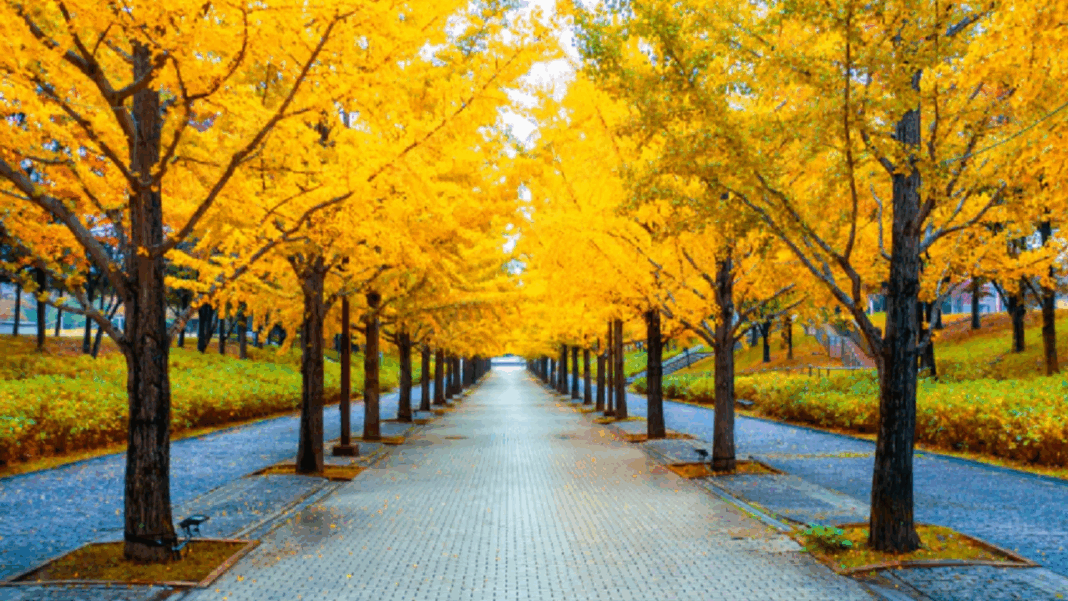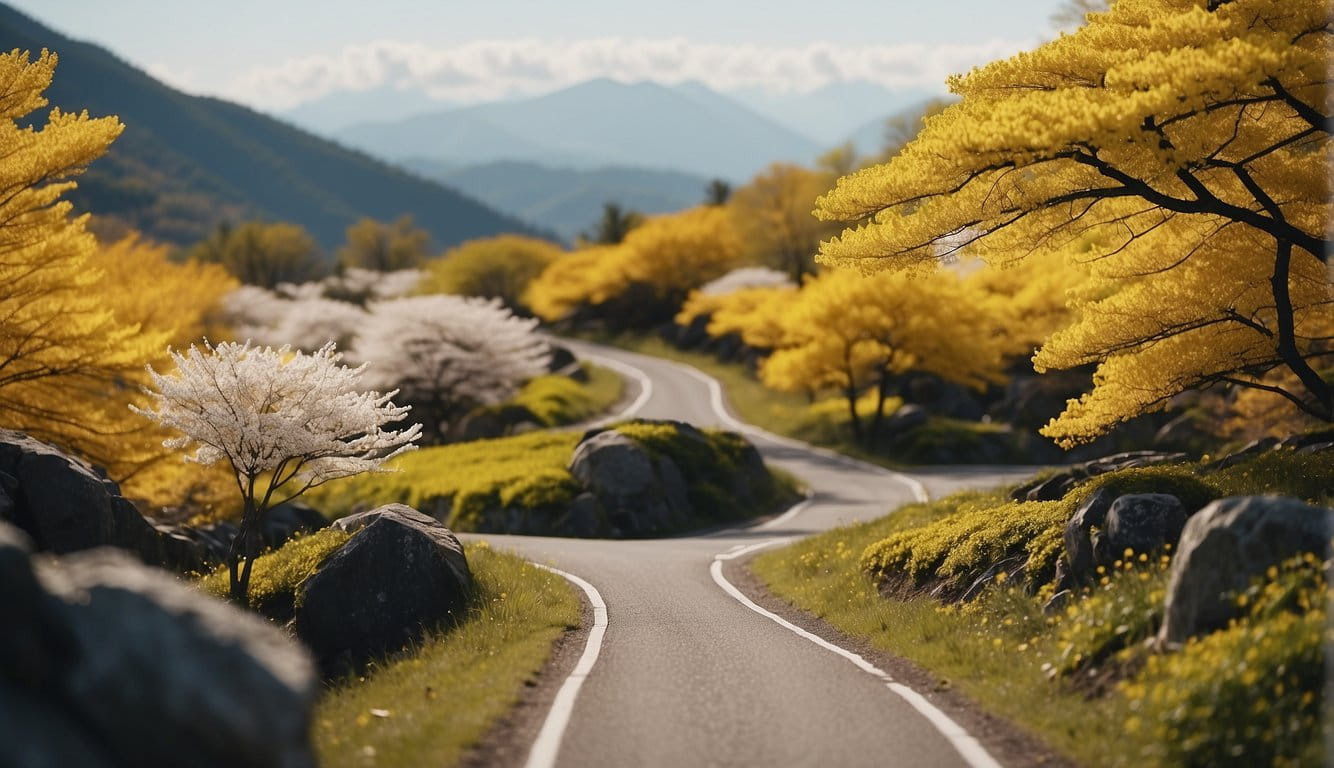The Tranquil Beauty of Yellow Spring Road
Few experiences rival the calm and peace of driving along a scenic, quiet road surrounded by nature. Across the world, such routes offer a momentary escape from life’s bustle—but in Japan, one road stands out for far more than just its visual appeal. Known as Yellow Spring Road, it is renowned not only for its breathtaking scenery but also for its deep spiritual and cultural roots.
Located in a country famed for its Zen-like harmony and historical richness, Yellow Spring Road is more than just a physical pathway—it’s a symbolic journey into Japan’s mythology, spirituality, and history. Walked by pilgrims for centuries and now embraced by modern travellers seeking serenity, this route continues to offer a profound experience.
Even if you can’t set foot on it just yet, let us take a mental journey down this sacred road by learning about its origins, spiritual significance, and why it captures the hearts of those who encounter it.
The Historical Significance of Yellow Spring Road
Situated in the sacred Kumano region on the Kii Peninsula in Wakayama Prefecture, Yellow Spring Road is steeped in myth and legend. It is closely associated with Izanami and Izanagi, two central deities in the Shinto belief system. According to myth, this path symbolically leads to Yomi, the land of the dead—giving the road a place of reverence in Japanese spirituality.
This intertwining of natural beauty and myth has made the road a site of pilgrimage for generations. Devout followers have walked its trail seeking spiritual clarity, healing, or a connection to their ancestors. Over time, its significance has only grown, becoming not just a historical treasure, but also a cornerstone of Japan’s cultural identity.
A Spiritual Pilgrimage for All
While originally a path for pilgrims, Yellow Spring Road now attracts a wider variety of visitors. Spiritual seekers, tourists, nature lovers, and casual wanderers all find something deeply moving here. Even those who wouldn’t describe themselves as religious often report feeling emotionally stirred and spiritually recharged.
Perhaps that’s the very definition of spirituality—feeling something profound that words alone cannot explain.
Natural Beauty and Serene Landscapes
A Quintessentially Japanese Landscape
Describing Yellow Spring Road is like painting a scene from a Japanese ink scroll. The winding path meanders through dense forests, beneath towering ancient trees, bordered by moss-covered stones. Sunlight filters through the leaves, casting dappled shadows on the earth. It’s a vision that feels uniquely, unmistakably Japanese.
Whether it’s mist clinging to the treetops or the gentle rustling of leaves in the wind, everything about the road invites contemplation and stillness.
A Nature Lover’s Paradise
Yellow Spring Road is a haven for biodiversity. The flora here includes a stunning variety of trees—particularly those that turn golden yellow in autumn, giving the road its name. Wildflowers dot the path, infusing the air with a delicate, natural fragrance.
As for fauna, birds serenade travellers with melodic calls, while squirrels and deer are often spotted darting through the undergrowth. On rare occasions, one might even glimpse the elusive Japanese fox, a creature deeply symbolic in local folklore.
Protecting a Cultural Treasure
One of the things that stands out about Japan is its dedication to preserving cultural and spiritual heritage. Yellow Spring Road is no exception. Recognised as a UNESCO World Heritage Site, it is protected and revered as a national treasure.
Its importance extends beyond tourism—it is a living symbol of Japan’s enduring respect for tradition, spirituality, and nature.
Nearby Attractions in the Kumano Region
If you’re planning a visit, don’t stop at Yellow Spring Road alone. The Kumano region offers a wealth of historical and spiritual sites. Here are some nearby must-sees:
Kumano Nachi Taisha
One of the three sacred Kumano Sanzan shrines, this location features the majestic Nachi Falls, Japan’s tallest waterfall. It’s a powerful and awe-inspiring destination for pilgrims and travellers alike.
Kawayu Onsen
A short journey from Yellow Spring Road brings you to Kawayu Onsen, a naturally occurring hot spring where visitors can soak in warm, mineral-rich waters. It’s the perfect place to relax and reflect after a day of walking sacred paths.
Kumano Hayatama Taisha
Located where the Kumano River meets the sea, this shrine is famed for its ancient camphor tree, believed to be over a thousand years old—a powerful symbol of longevity and endurance.
Kumano Hongu Taisha
The spiritual heart of the Kumano Kodo pilgrimage network, this shrine lies in a peaceful forest setting and offers a deeply tranquil atmosphere for prayer and meditation.
Yellow Spring Road in Japanese Popular Culture
With such striking beauty and spiritual depth, it’s no wonder Yellow Spring Road has found a place in Japanese popular culture. It has featured in films, literature, and television shows, often portrayed as a place of introspection, mystery, and emotional revelation.
These depictions help keep the road alive in the minds of younger generations, ensuring that its legacy continues to resonate within modern Japanese identity.
Tips for Visiting Yellow Spring Road
-
Best Time to Visit: Visit in late March to early April for spring blossoms or autumn for stunning foliage.
-
Plan Ahead: Use online resources to chart your journey, and make sure you’re familiar with transport options and trail conditions.
-
Respect Local Customs: As with all sacred sites in Japan, be respectful. Leave no trace, and honour the boundaries and etiquette set by locals.
Final Thoughts
The Yellow Spring Road is more than just a scenic walk—it’s a journey into Japan’s soul. From its ancient myths and spiritual significance to its unmatched natural beauty, it offers an experience that transcends sightseeing.
Whether you’re a pilgrim seeking spiritual fulfilment or a traveller in search of tranquillity, this road welcomes you. And perhaps, even if you only visit it in your imagination, it still offers a small piece of the peace it so generously gives to those who walk it.
- Texas’ Trending THC Infused Drink Brands - May 17, 2025
- Massachusetts’ THC Soda Options You’ll Love - May 17, 2025
- A Journey Through Nature, Mythology, and Spiritual Peace - May 6, 2025



